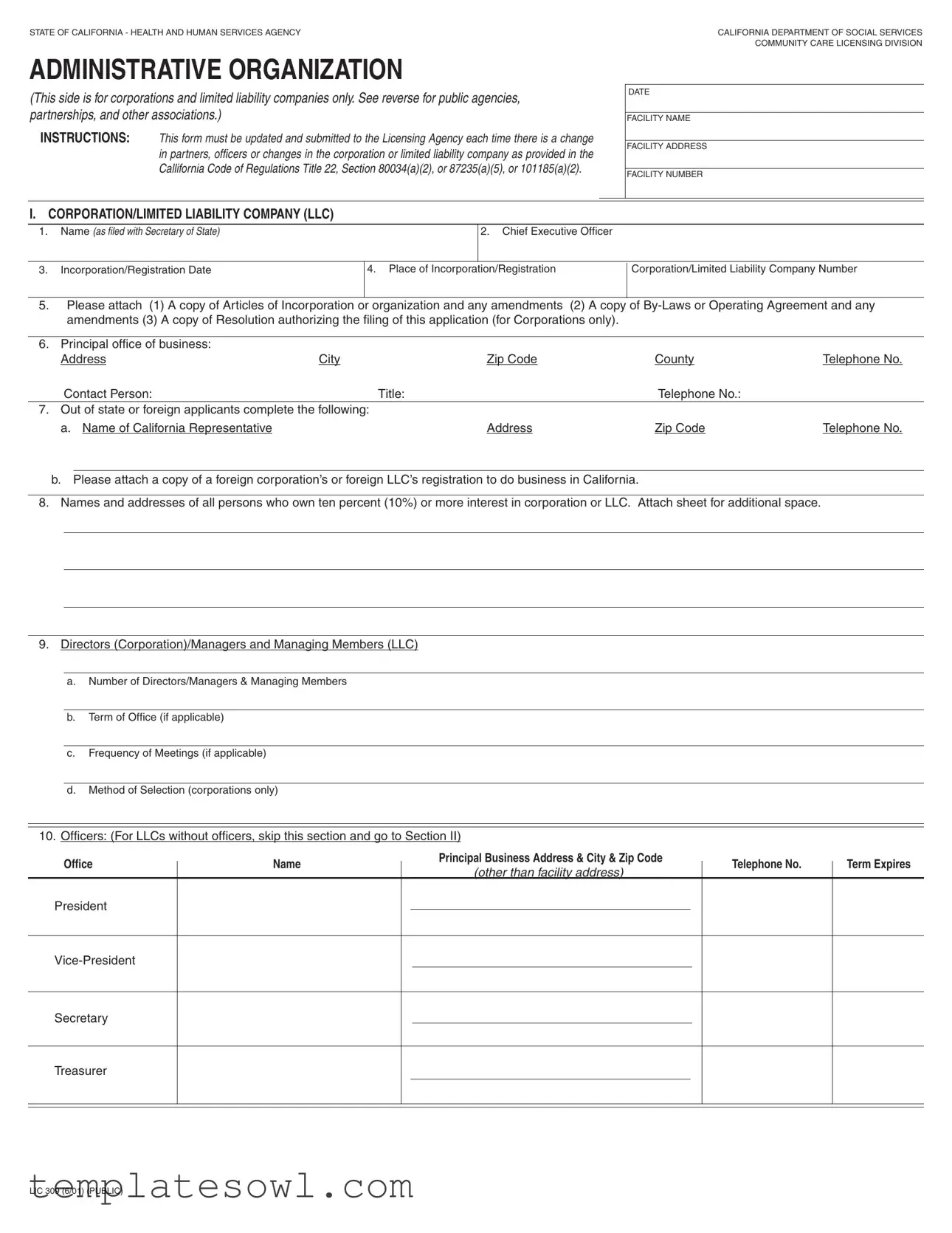Filling out the LIC 309 form can seem straightforward, but many individuals make mistakes that can delay the licensing process or cause complications later on. Below are some common errors to watch out for when completing this important document.
One frequent mistake occurs when applicants fail to update their information promptly. It is crucial to submit the LIC 309 form each time there are changes in partners, officers, or the organization itself. Forgetting to do so can lead to compliance issues with the California Code of Regulations.
Inaccurate information tends to be a major issue. For instance, when listing the corporation or LLC name, it should match exactly as filed with the Secretary of State. Any discrepancies can raise flags and delay processing. Additionally, many skip the step of providing a copy of essential documents, such as the Articles of Incorporation or Operating Agreement, which are required attachments.
Another mistake lies in how contact information is presented. Applicants should ensure that the telephone numbers and addresses are correct and up-to-date. Mismatched data can make it challenging for the licensing agency to reach out, resulting in unnecessary delays.
Some also overlook the requirement for additional documentation. While filling out the form, including items like a copy of the resolution authorizing the application for corporations is essential. Not attaching these documents can lead to rejection of the application.
Measuring ownership interests can be tricky. Properly identifying and listing individuals who own ten percent or more interest in the corporation or LLC is vital. Providing inaccurate percentages or omitting owners can cause issues with transparency and trust.
Failure to gather proper signatures on the form adds another layer of complexity. All required signatures must be included; otherwise, the application may be considered incomplete. Sometimes individuals hesitate to include the California Representative, which can also hinder out-of-state applicants.
For corporations, neglecting to report on the number of directors or managers can lead to questions from the licensing agency. Providing information on terms of office, frequency of meetings, and method of selection is essential for a complete submission.
In partnerships, some individuals forget to specify whether partners are general or limited, which is critical information. Clearly distinguishing between these types helps the agency understand the structure of the partnership more thoroughly.
Lastly, many applicants fail to review their completed forms before submission thoroughly. Taking the time to cross-check all sections may prevent uncomplicated errors that could complicate the application process.
By paying attention to these common pitfalls, applicants can streamline their experience and significantly enhance their chances of a successful submission. Proper diligence can lead to a smoother licensing journey!


